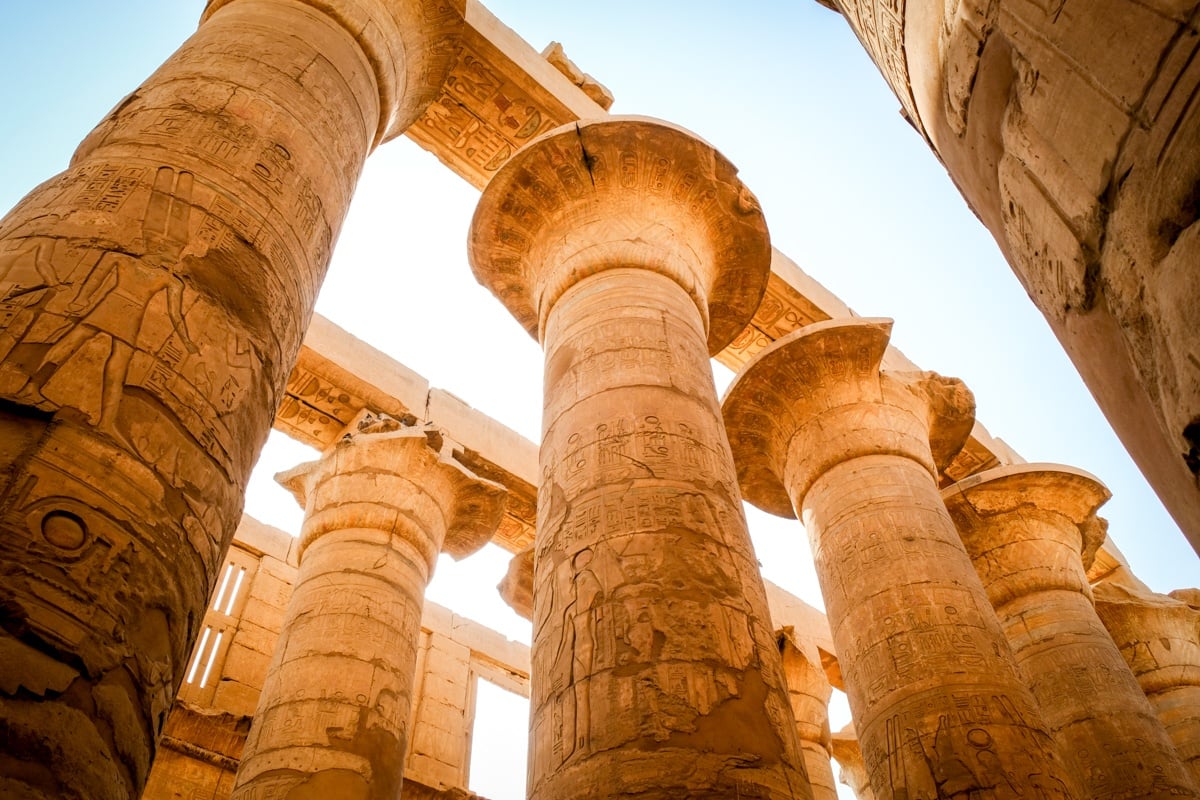Summary
The Karnak Temple complex in Luxor is one of Egypt’s largest and most iconic ancient structures, particularly famous for the Temple of Amun. This monumental site, constructed over 1,500 years, showcases intricate statues, grand columns, and well-preserved hieroglyphs. This guide provides essential information to enhance your visit.
Where To Stay




History Of Karnak Temple
The construction of the Karnak Temple complex dates back over 4,000 years (around 2055 BC) and continued until the late years before the Roman occupation of Egypt. This monumental site was dedicated to Egyptian deities, particularly Amun and Osiris. Throughout the centuries, successive Egyptian rulers contributed to its expansion, enhancing its grandeur and significance.
Karnak transformed into a critical temple city, recognized as one of the largest religious complexes globally, with the Angkor Wat in Cambodia being its major competitor regarding size.
Despite its decline following the Roman sacking of Thebes (now Luxor) in the 1st century AD, it remains one of Egypt’s top archaeological attractions, second only to the pyramids of Giza.



Visiting The Karnak Temple Complex
Spanning over 80 hectares (200 acres), Karnak offers a vast array of sights. Visitors should be cautious of fake guides eager to showcase ‘photo spots’ in exchange for tips, which is a common scenario in Egypt. It is advisable to decline politely if approached.
For history enthusiasts, diving deep into Karnak’s wonders can take hours; however, due to the intense Luxor heat, many prefer to streamline their visit. Arriving early in the morning may help mitigate heat exposure.



Best Things To See
Noteworthy statues and sphinxes are prominently located near the entrance, notably in the Great Court between the first and second pylons, featuring a remarkable figure of Ramesses II alongside rows of ram-headed sphinxes. Additionally, do not overlook the impressive hieroglyphs and towering obelisks, including the tallest standing obelisk globally.
However, the highlight is undoubtedly the Hypostyle Hall, the largest of its kind on Earth, where visitors can marvel at the grand columns that evoke a sense of awe and wonder.
Hours & Entrance Fees
- Hours: 6 AM – 5:30 PM
- Entrance Fee: 200 EGP
- Students: 100 EGP with ID
This temple is also included in the Luxor Pass, allowing for convenient access.



How To Get There
Karnak Temple is situated on the east bank of the Nile River within Luxor, Egypt. Direct flights from Cairo International Airport (CAI) to Luxor airport (LXR) typically last an hour, costing approximately $90 USD or less. Alternatively, a 9-hour train journey is available for around $10.
Upon arrival in Luxor, hiring a driver is the most convenient way to reach Karnak Temple, as walking from the town center can be challenging, particularly in high temperatures.
Best Karnak Temple Tours
For travelers preferring guided experiences, numerous reputable companies provide tours to Karnak and other nearby temples in Luxor. Consider this Luxor day tour package encompassing major attractions like the Colossi of Memnon, Luxor Temple, and the Valley of the Kings/Queens.
This tour company has a strong reputation worldwide, and their services come highly recommended.
More Egypt Travel Tips
Thank you for reading these travel insights regarding the Karnak Temple in Luxor, Egypt. Be sure to explore the Egypt Travel Guide for comprehensive information and check out the best things to do in Egypt!





